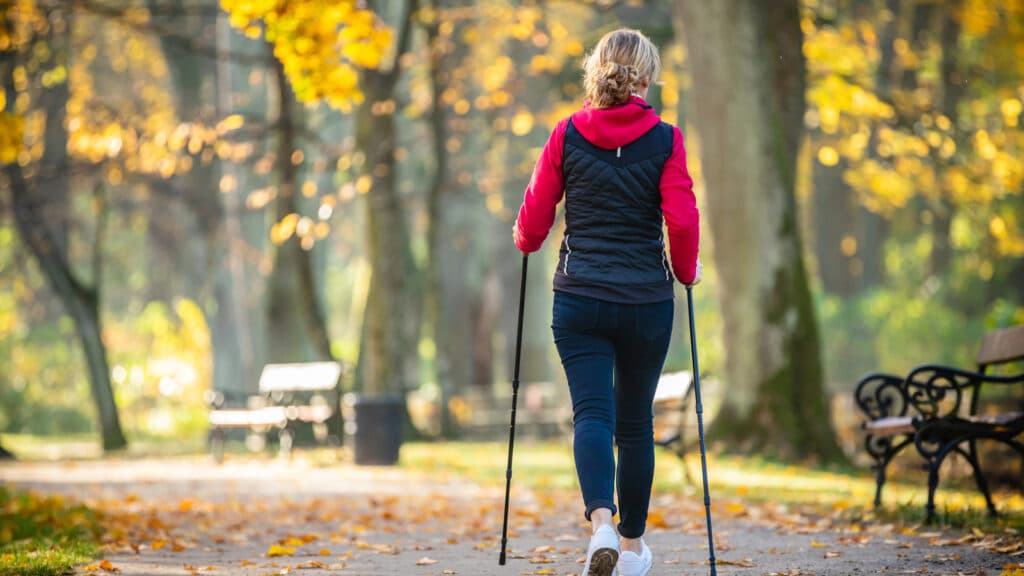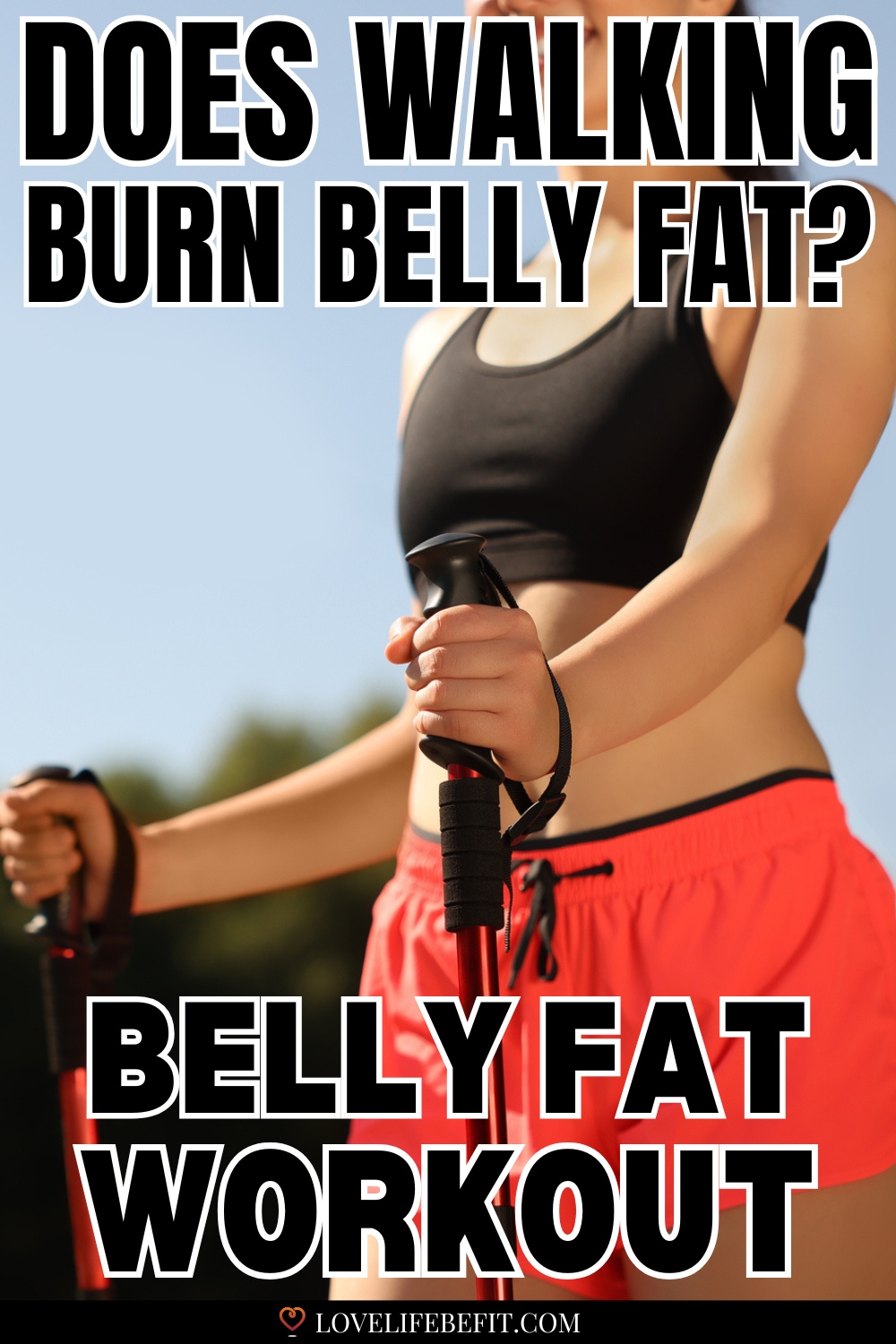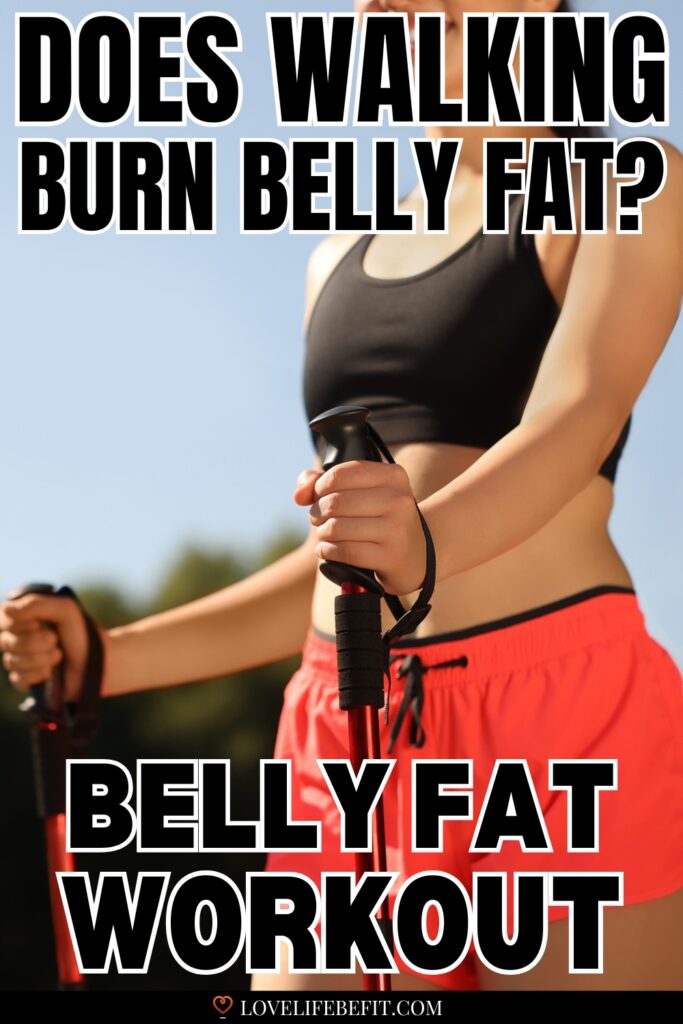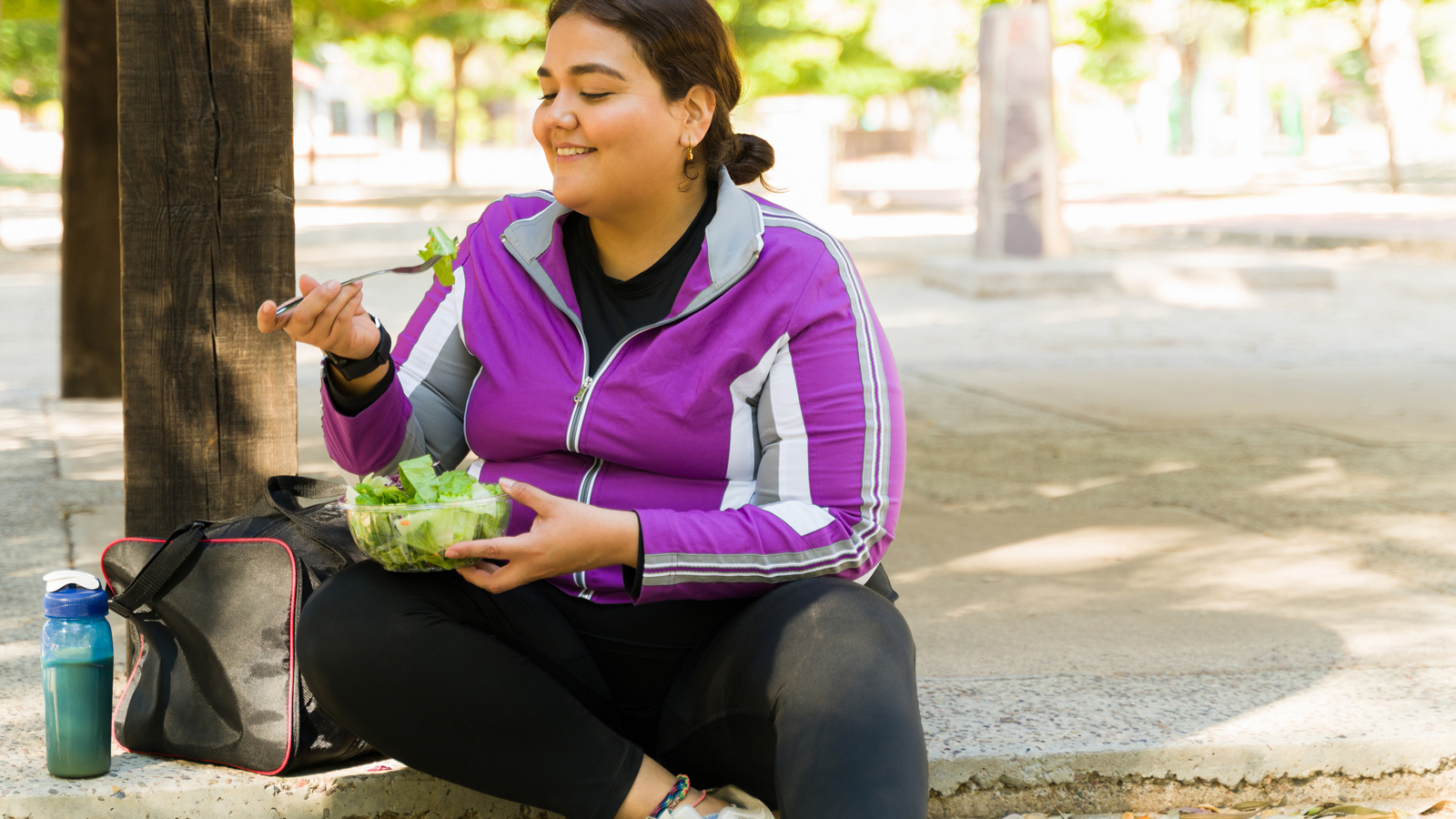Does Walking Burn Belly Fat? Tips For Your Belly Fat Workout
Stop the stomach crunches. Walking is one of the best ways to burn fat and lose weight. The more steps you take, the more calories you will burn — even if your gait is slow. But does walking reduce belly fat?
It’s time for some truth. To set aside the wild claims, misconceptions, and myths of the diet industry. And find out how to get the waistline you’ve always wanted.

Myth 1: Spot Reduction of Belly Fat
There is no such thing as spot reduction when it comes to losing belly fat. Abdominal exercises will tighten and tone your stomach muscles, but you’ll never see the result if they’re covered in a layer of fat.
If you want to burn belly fat, you need to reduce your overall fat – you can’t target just one specific area.
Everyone is different. Some people will lose weight from their abdomen first, and for others, the belly will be the last area to slim down.
It sucks, but that’s just the way it is.
The good news is – the simple act of walking is a great way to get fitter and lose weight. With a calorie burn of about 80 calories a mile, walking more makes a big difference to your energy expenditure – and your waistline.
To get results and lose those inches, just make sure you combine walking with a healthy diet. More whole grain food, fruit, vegetables, and lean protein, and less sugar, salt, and saturated fat.
Related post: What to Eat After Walking For Weight Loss?

Myth 2: The Fat Burning Zone
So many people have fallen for this one. It just sounds so good. The idea is that walking in the correct heart rate zone will burn the most fat. The zone is between 64 and 76% of your maximum heart rate (MHR) defined as moderate-intensity physical activity.
Don’t you love this idea? Set your heart rate limits to walk in the zone and see your body fat melt away.
Go to any gym, and you’ll find someone on the treadmill walking away at a steady pace.
But there’s just one problem with this idea of losing weight – it’s a misconception that doesn’t understand your body’s use of energy.
The Different Energy Systems
Three energy systems start simultaneously when you exercise:
- Phosphagen
- Glycolytic
- Oxidative.
Phosphagen relies on stored energy in your muscles. It’s terrific for sprinting or explosive efforts such as weight lifting but burns out very quickly.
The glycolytic system lasts longer and comes from using glucose. It’s taken from the bloodstream (blood sugar) or accessed from glycogen stores in the liver and muscles. The glycogen is converted into glucose.
Blood glucose levels can be topped up during exercise by eating carbohydrates. If your blood sugar falls too low you run out of energy – just like hitting the wall in a marathon.
The last system is oxidative, and this is where the myth of a fat-burning zone comes from. It’s the primary energy source for ultrarunners and other endurance athletes. The system that keeps on delivering energy when you’ve burnt up your stores of glycogen.
Burning Fat
The oxidative system – also known as the Krebs cycle – is the chemical conversion of carbohydrates, fats, and proteins into carbon dioxide and water and generates energy aerobically – most of this energy comes from body fat.
All types of exercise – fast, slow, short, and long will tap into the oxidative system. For your sprinter, it’s negligible. The exercise session is over too quickly.
For a twenty-minute high-intensity interval session (HIIT), most of your calories will come from glycogen stores, but you’ll still be burning some fat.
Fat Burning Example
The idea of keeping your exercise intensity low to selectively burn a higher percentage of body fat just doesn’t stack up.
Exercise at 65% of your MHR, and your fat stores provide about 50% of your energy needs. Increase the intensity to 85% MHR, and this percentage drops to about 33%. (The actual percentage depends on the individual and exercise duration).
A study at the University of Texas found that cyclists exercising for 30 minutes at 65% MHR burned 220 calories with 110 calories from fat.
When the same cyclists exercised at 85% MHR for 30 minutes, they still managed to burn 110 calories from fat but increased the total number of calories to 330.
It’s the same for walking for weight loss. It’s always better to burn more calories by walking further or walking at a brisk pace.
After exercise, when you have your next meal, your body replenishes its stores. If your exercise session has mainly burned fat, your carbohydrate stores will quickly be replenished – any excess carbohydrates are then stored as fat.
The result is the same – fat burn or run down your carbohydrate stores, you still need a calorie deficit to lose weight.
Burning fat for energy when exercising sounds terrific but there’s no advantage for weight loss over using glycogen stores to fuel your walks.
Myth 3: Exercise In A Fasted State
I’m not really a morning person – so I’ve enjoyed busting this myth! It’s the idea that exercising on an empty stomach is better for weight loss.
The myth is based on a tiny study of 12 young, active white males aged 17 to 24. The participants either fasted or were fed breakfast before running for 60 minutes at 75% MHR.
All food was weighed and measured for 24 hours, and the study found that fasting before morning exercise decreased 24-hour energy intake and increased fat oxidation during exercise.
The conclusion: exercising fasted can help with burning fat and losing weight.
I’m going to take a lot more convincing. These participants exercised regularly, were already normal weight, and had a body fat percentage of less than 15%. Not your typical person trying to lose weight.
I have a son this age. If he skips a meal, he just eats more the next day. His life evolves around sleeping, eating, and exercising – probably in that order. It’s almost impossible for him to gain or lose weight.
For everyone else, life is a bit different… exercising fasted with depleted glycogen stores may force your body to fat burn. Maybe, when you eventually eat, you’ll only replace your carbohydrate stores.
Maybe.
Or maybe you’ll just get really hungry.
Total calories burned and total calories consumed are the most important markers for losing weight.
Does Walking Reduce Belly Fat?
Now we’ve dealt with myths and misconceptions, let’s talk about truths. Walking can help you lose weight. The more you walk, the more calories you’ll burn.
Create a calorie deficit where you use more energy than you consume, and the result is weight loss. Walking for weight loss by following a walking program is an effective tool for fat loss.
But what about reducing belly fat?
There are two types of belly fat:
- Subcutaneous – the layer under the skin.
- Visceral – fat that’s packed around your organs beneath the abdominal wall.
Subcutaneous fat is just the wobbly bits that don’t look so good at the beach. It’s less of a health risk.
It’s visceral fat you want to watch out for. A sign of too much visceral fat is your waistline.
Men with a waist circumference greater than 40 inches (102 cm) and women with a waist circumference greater than 35 inches (88 cm) are considered to have abdominal obesity. Centers For Disease Control And Prevention (CDC)
Health risks include heart disease and Type 2 diabetes.
The good news is this dangerous type of fat responds quickly to diet and exercise – often, it’s the first type of fat you’ll lose.
Steps To Lose Belly Fat
Regular aerobic exercise combined with healthy eating is the best way to reach your weight loss goals.
1. Set Your Calorie Target
- Use this daily calories burned calculator to work out how many calories you burn in a normal day. (As I work at a desk, I like to set my activity level to a sedentary lifestyle and calculate my energy expended exercising separately). Based on the Dietary Guidelines for Americans (2020-2025), most female adults typically need 1600 to 2400 calories per day, and male adults 2000 to 3200.
- Set your calorie deficit target – a deficit of 500 calories is realistic.
- Use the calories burned walking calculator to find how far you need to walk every day.
Your deficit can come from a combination of walking more and eating less. If you’re new to exercise, burning 250 calories a day walking and reducing your calorie intake by 250 calories a day is a good starting point.
2. Walk Regularly
Be consistent. An exercise program only works if you make it part of your daily routine.
Making a big effort for one or two days and then taking the rest of the week off won’t help. Develop a regular walking routine to get the best results.
3. Increase Intensity
How fast you walk will depend on your fitness level. In the beginning, a brisk walk may be 3 miles per hour.
As you get fitter, you’ll need to increase the intensity to get the same effect. For best results, keep pushing the pace!
Related post: Walking For Weight Loss Plan: Fat Busting Workout Schedule
4. Mix It Up
Keep up your enthusiasm and interest by walking with friends, adding hills, varying the route, and adding walking intervals – alternating a moderate pace with brisk walking.
Related post: How Many Calories Do You Burn Walking Uphill?
5. Eat Better
Try making small, sustainable changes to your diet. It doesn’t have to be a big change – for example, avoiding sugary drinks and drinking water instead.
Once a small change becomes a habit, find something else to change. It could be cooking more home meals – home-cooked meals often have fewer calories than takeaways and ready meals.
Little improvements add up until you’re eating a much better diet.
Walking For Weight Loss
Lose belly fat and build lean muscle by walking for weight loss. These resources will help you get started walking, lose weight, and keep it off.






